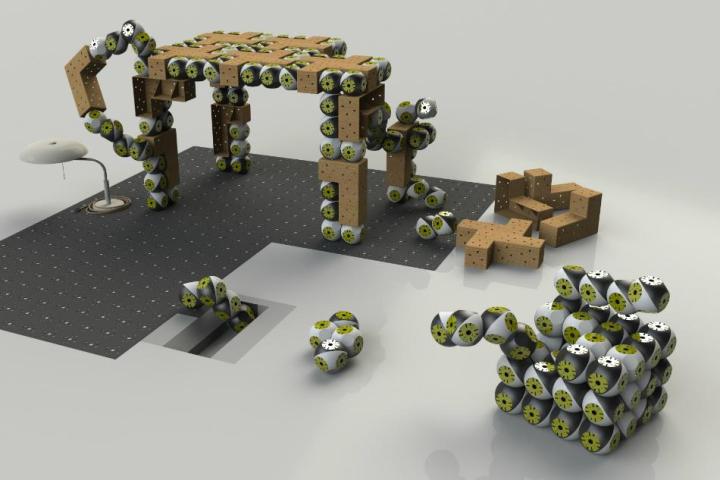
Are you ever at home and think to yourself you could really use another table right about now? Soon, such an out-of-the-box wish may be at your command.
A team of Swiss researchers from Biorobotics Laboratory (BioRob) at École Polytechnique Fédérale de Lausanne (EPFL) have developed novel modular robots called Roombots, which can form any type of furniture at the drop of a hat. The Lego-like robotic blocks move on their own and “stick” together, creating various structural shapes.
According to the researchers, they hope that one day, the Roombots will autonomously connect together to form everything from stools and chairs to sofas and tables.
“The idea of different units that self-assemble and change morphology has been around for quite a while, but nobody came up with a good idea for how to use them,” lead researcher Massimo Vespignani, an engineer at the École Polytechnique Fédérale de Lausanne, told LiveScience. Vespignani also co-authored an article on the research to be published in the July issue of the journal Robotics and Autonomous Systems.
Each Roombot is a 9-inch long block that contains a battery, an antenna, and three separate motors, which allow the module to move in three different dimensions and change its shape. The blocks also house active connectors that can grip other modules and pieces of furniture, forming multiple types of structural configurations. When strung together, the modules resemble a long robotic centipede.
The Roombots still have a long way to go before they can be available for public use, as the researchers still haven’t come up with a way for people to control them, and their current design cannot support a person’s weight. But the scientists envision their modules being used for a number of applications, such as programmable conference rooms, satellite or space station elements, or assistive furniture for the elderly.
Editors' Recommendations
- Most art galleries are closed, but you can still tour this one — with a robot
- Scientists discovered 20 new moons around Saturn, and you can help name them
- The U.S. Army is developing A.I. missiles that can choose their own targets
- Soft robots can be formed into firm shapes using light and magnets
- Thought-controlled robotic hand can play games of rock-paper-scissors


